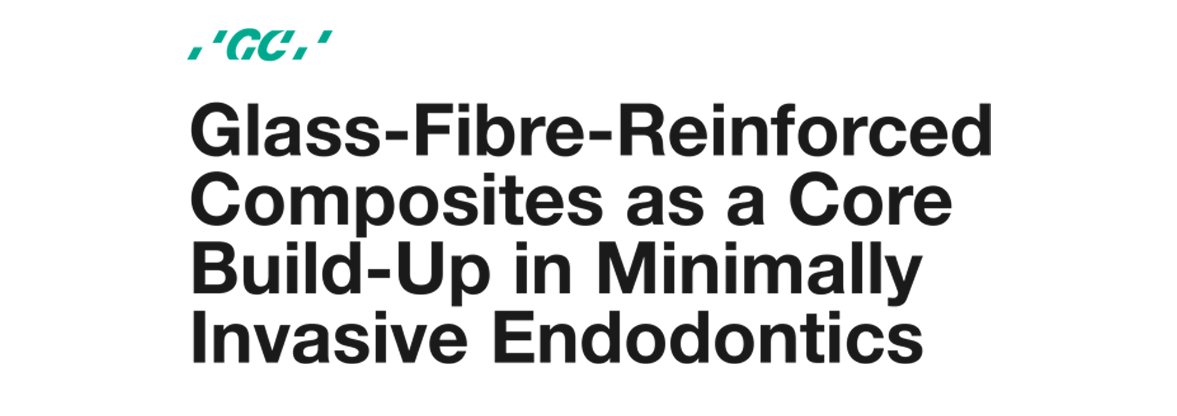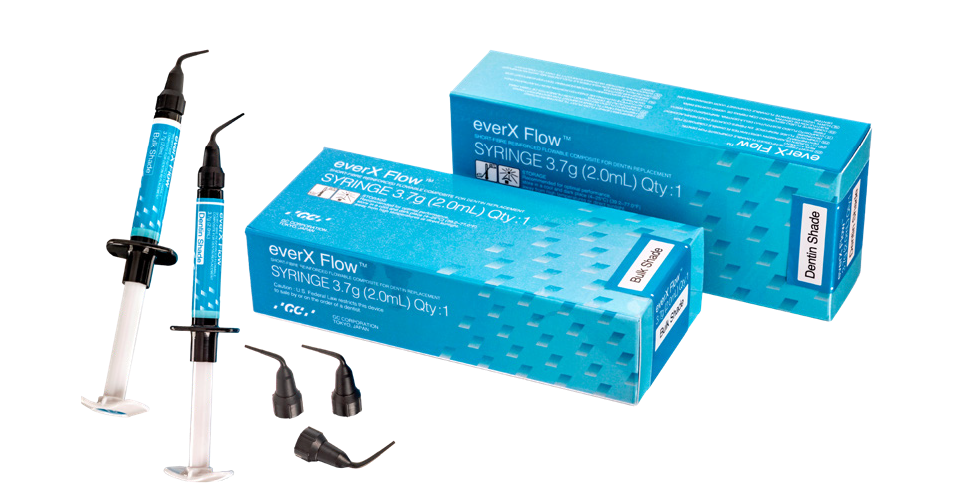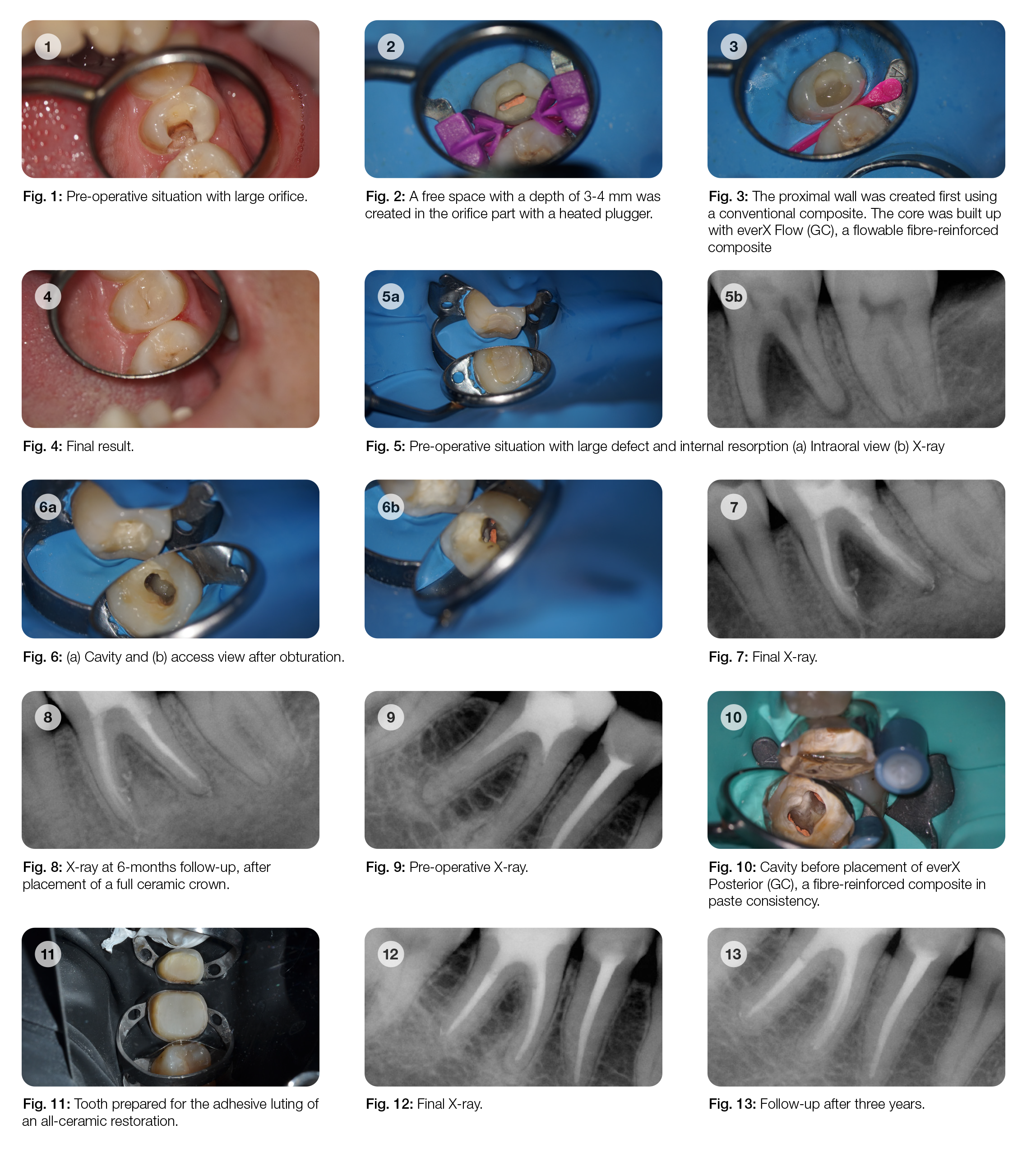
Even though dentistry is nowadays focusing more and more on prevention, there is still a considerable amount of patients with extensive caries lesions in need of endodontic treatment. When the damage has already occurred, it’s important to treat the lesion in a minimally invasive way. Preserving the cervical dentine is of utmost importance here, as maintaining a ferrule is necessary for a good prognosis of the restorative treatment.
Since the introduction of microscopes and NiTi files in dentistry, preservation of the cervical dentine has become more simple and predictable.
Several options exist for the post-endodontic treatment*: the treatment plan depends on the remaining tooth structure, wall thickness and total cavity size.
Heavily damaged teeth often end up in a restorative cycle, with increasingly larger restorations after the original fractured and endodontic retreatments, the prognosis of the tooth becoming worse and more challenging each time. Hence, it’s important to implement a correct treatment plan to preserve teeth not only in short term but to avoid catastrophic failures that compromise long-term survival.
The first step is to preserve tooth tissue especially in cervical part of crown. Preparation designs based on root canal orientation allow for very conservative access cavities and give better restorable prognosis in fracture cases*.
At restorative side fibre-reinforced composites (FRC) can be used to reinforce cavity. Several studies have highlighted that fracture pattern and load-bearing capabilities of large endo treated molars with FRC was more favourable compared to those restored with conventional direct composites*. Hence FRC became promising solution for post-endodontic restoration mostly cases with conservative access.
One suitable indications for FRC is endodontically treated premolar with one big orifice one large oval canal or deep furcation (Figs 1-4). In such cases an FRC can be placed as Nayyar’s core modification* without preparing office part with Gates or Largos. The restoration can be finished as usual directly with conventional composite.
Endodontically treated molars with conservative access do not require post. Of course final treatment does not only depend on access type but also size depth cavity Here FRC have also proven their worth indicated cases internal resorptions (Figs 5-8).
Even when endodontic treatment finished additional restoration (crown onlay overlay) FRC can be used core build-ups such as Nayyar’s core This will most indicated retreated cases where office part root canal already been prepared (Figs 9-13).
EverX Posterior™ and everX Flow™ are excellent options to restore the core of endodontically treated teeth. Together with the preservation of cervical dentine, they are part of a strategy to increase the longevity of the post-endodontic restorative treatment.

References
1. Zarow M, Ramírez-Sebastià A, Paolone G, de Ribot Porta J, Mora J, Espona J, Durán-Sindreu F, Roig M. A new classification system for the restoration of root filled teeth. Int Endod J. 2018; 51(3):318-334.
2. Özyürek T, Ülker Ö, Özsezer Demiryürek E, Yılmaz F. The Effects of Endodontic Access Cavity Preparation Design on the Fracture Strength of Endodontically Treated Teeth: Traditional Versus Conservative Preparation. J Endod. 2018; 44(5):800-805.
3. Garoushi S, Sungur S, Boz Y, Ozkan P, Vallittu PK, Uctasli S, Lassila L. Influence of short-fiber composite base on fracture behavior of direct and indirect restorations. Clin Oral Investig. 2021 Jan 8 (Online ahead of print).
4. Geerts G, Pitout E, Visser H. Fracture resistance of endodontically treated premolars with fibre-reinforced composite restorations. Eur J Prosthodont Restor Dent. 2011; 19(1):25-31.
5. Nayyar A, Walton RE, Leonard LA. An amalgam coronal-radicular dowel and core technique for endodontically treated posterior teeth. J Prosthet Dent. 1980; 43(5):511-5.